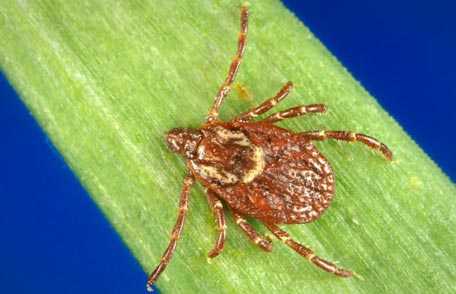Emerging Tickborne Diseases
Original webcast: Tuesday, March 21, 2017 at 1:00 p.m. ET
Encore presentation: Tuesday, May 16, 2017 at 1:00 p.m. ET

Infections from tickborne diseases in the US are steadily increasing — and new tickborne diseases have been discovered in recent years. Ticks are vectors that can carry infectious agents such as bacteria, viruses, or parasites. When an infected tick bites a person or an animal, the tick’s saliva transmits infectious agents that can cause illness. Some ticks can transmit multiple diseases. These “co-infections” pose challenges for diagnosing, treating and preventing tickborne diseases.
The geographic ranges of ticks also are expanding. Ticks differ in their tolerance to heat, cold and aridity, making certain tick species more common than others in any given location in the United States. Different species transmit different diseases and this leads to differences in incidence of tickborne diseases by geographic region in the US.
Join us for this session of Public Health Grand Rounds as experts discuss emerging tickborne diseases, treatment options, prevention strategies, and advances in diagnosing tickborne diseases.
Future Grand Rounds topics include the National Amyotrophic Lateral Sclerosis Registry, promoting hearing health across the lifespan, and new frontiers in workplace health.
Presentation
Beyond the Data — Emerging Tickborne Diseases
Presented By:
Rebecca Eisen, PhD
Research Biologist, Bacterial Diseases Branch
Division of Vector-Borne Diseases
National Center for Emerging and Zoonotic Infectious Diseases, CDC
“Expanding Diversity and Distribution of Tickborne Diseases”
Christopher D. Paddock, MD
Medical Officer, Rickettsial Zoonoses Branch
Division of Vector-Borne Diseases
National Center for Emerging and Zoonotic Infectious Diseases, CDC
“ Tickborne Spotted Fevers – Old and New”
Gregory D. Ebel, ScD
Associate Professor, Department of Microbiology Immunology and Pathology
Director, Arthropod-Borne and Infectious Diseases Laboratory
College of Veterinary Medicine and Biomedical Sciences
Colorado State University
“ Emerging Tickborne Viruses “
Bobbi Pritt, MD, MSc, DTM&H
Director, Clinical Parasitology Laboratory
Co-Director, Vector-borne Diseases Laboratory Services
Professor of Pathology and Laboratory Medicine
Division of Clinical Microbiology
Mayo Clinic
“Advances in Diagnosing Tickborne Diseases”
Facilitated By:
John Iskander, MD, MPH, Scientific Director, Public Health Grand Rounds
Phoebe Thorpe, MD, MPH, Deputy Scientific Director, Public Health Grand Rounds
Susan Laird, MSN, RN, Communications Director, Public Health Grand Rounds
Continuing Education
This session is available for Continuing Education. Click here [PDF – 319 KB] for more information.
- Page last reviewed: March 15, 2017
- Page last updated: May 4, 2017
- Content source:
- Centers for Disease Control and Prevention
- Page maintained by: Office of Associate Director of Communication, Division of Public Affairs



 ShareCompartir
ShareCompartir